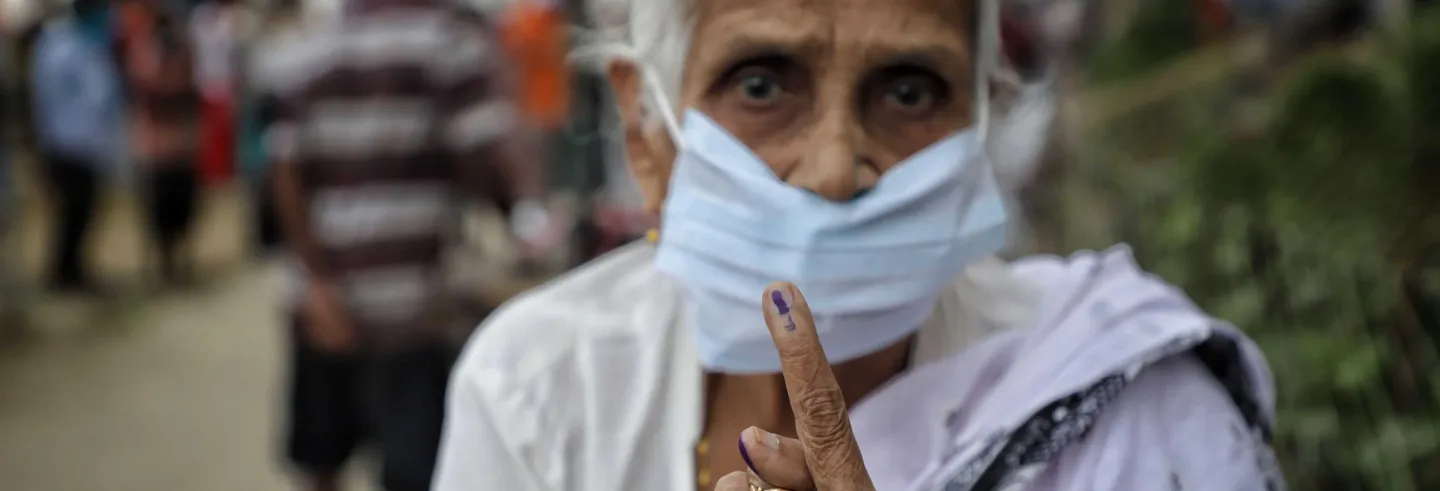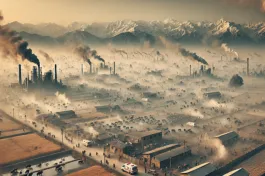The 20th century was globally the century of democracy—in terms of acceptance, adoption and enrichment of democratic politics. If we look at indications now in the 21st century in different parts of the world—from Brazil to Myanmar, the United States to Hungary, Turkey to India, not to speak of France and Sri Lanka—the pattern that emerges, however, is unmistakable. A common strand is an inner corrosion, even if there is no complete rejection of democracy. Many democracies may not entirely cease to be democratic—they will remain at least ‘partly democratic’ 1 This is the terminology adopted by ‘international’ think tanks, particularly by Freedom House. I prefer the label ‘sub-democratic’ – which is used in this essay as well, in part to distance the argument from the controversy surrounding the method used by and the conclusions arrived at by such international think tanks. .
Why is there a global fatigue on democratic consolidation? Or why is the 21st century moving towards becoming a century of a loss of romance with democracy. Some of the answers to these questions can be explored through an analysis of democracy’s trajectory in contemporary India.
Until a decade or two ago, democracy in India seemed to be doing well. Today, all serious scholars of Indian politics would probably agree that something is wrong with India’s democracy, even if the details of their analyses may vary. This calls for an inquiry into three political questions: What has suddenly gone wrong in the positive story that had been evolving since the 1950s? Was India’s democracy fragile and fraught with such weaknesses that it failed to cope when it was challenged, and has begun to crumble? What explains this slide? The latter is a question that might give us meaningful clues about how to arrest the slide.
Today, all serious scholars of Indian politics would probably agree that something is wrong with India’s democracy.
Two contrasting views constitute the edges of public debate in India today. On the one hand, there is an argument that ever since the Bharatiya Janata Party (BJP)-ruled government led by Narendra Modi came to power in 2014, democracy has suddenly been jeopardised; institutions have collapsed or decayed; and communal division has become the basis of not only electoral ascendancy but of establishing loyalty to the nation. This is contrasted and contested by the argument that Modi came to power with a convincing majority and through a fair election. His ascension symbolised the defeat of family-based power and entrenched elites. Modi also signified the democratization of power not only in terms of his caste origins but also his humble class origins. He represented the aspirations of the ordinary citizen rather than the elite. Thus, democracy has become more secure, people-centred and has gained in vitality because ‘people’s’ voices have become central to outcomes.
A related argument that has considerable attraction to supporters of the present regime is that the criteria that are used to assess what constitutes democracy are alien. Culturally they have been shaped in the west and as such are inapplicable to India. Using this argument, ideas of individual freedom and freedom of expression are, in particular, shrugged off. Similarly, an extreme argument is made that India was never a democracy, it was only a façade with a bourgeois constitution; in actual practice the deprived communities were often oppressed by the state. According to the latter argument, whichever the government in power, it only used its authority to perpetuate this myth of democracy and protect bourgeois rule. Both these arguments—that democracy is wrongly understood by using a non-Indian perspective and that class rule is wrongly understood as democracy—are of course not new. They are quite simplistic and at the same time clichéd.
[An] argument that has considerable attraction to supporters of the present regime is that the criteria that are used to assess what constitutes democracy are alien…
As the public domain gets noisier with the increasing acerbity of these varied claims about India’s democracy, where does one locate the experience of the last seven decades without forgetting, ignoring or discounting the experience of the last seven years?
1. The crisis at present
At the present moment, the contours of the story of the current crisis of India’s democracy are fairly well-known. It will still be worthwhile to begin with the present, to find out what exactly is wrong in the polity we live in today. This is for a simple reason: the emerging trends seem to be more durable than the episodic ‘excesses’ that marked the Emergency of the mid 1970s. The current trends seem to have the capacity to have a long-term impact on the trajectory of democracy in India. Rather than expanding the idea of democracy, both to newer sections and to newer ideas, we seem to be experiencing the shrinking of democracy. Institutions are far less democratic, the public’s assertion of its rights is tamed, public opinion about political action vacillates between a formal recognition of the right to protest and an active scepticism about actual protests. All this is accompanied by the regime’s shrill claims about its democratic credentials based on its numeric majority in Parliament.
In February 2021, 58 cases of habeas corpus were pending before the Supreme Court. After the change of the constitutional status of Jammu & Kashmir, there was a crackdown on civil liberties in the former state and while most habeas corpus cases ‘dragged on’, in a number of them the courts actually pinpointed the violation of due process.
Data suggests that the filing of sedition cases has become very frequent ever since the BJP came to power in 2014. There has also been a spike in cases under the Unlawful Activities (Prevention) Act, and what should be more worrying is that these cases remain unresolved with the accused often stranded in custody. The alacrity and frequency with which bail applications are denied, particularly in cases involving political charges, does not require repetition. Only a wide-ranging legal study may, at a later stage, be able to tell us how the judicial system remained extremely narrow in its interpretation of civil liberties and departed from the principle of treating bail as a norm and jail as an exception.
Rather than expanding the idea of democracy, both to newer sections and to newer ideas, we seem to be experiencing the shrinking of democracy.
In the past seven years, there have been more than 400 cases of internet shutdowns. Systematic efforts have been undertaken to discipline the media by mounting cases and inquiries against journalists, besides using various regulatory agencies to target media houses. In 2020 itself, 67 journalists faced arrests and/or inquiries, practically turning attacks on media into official policy.
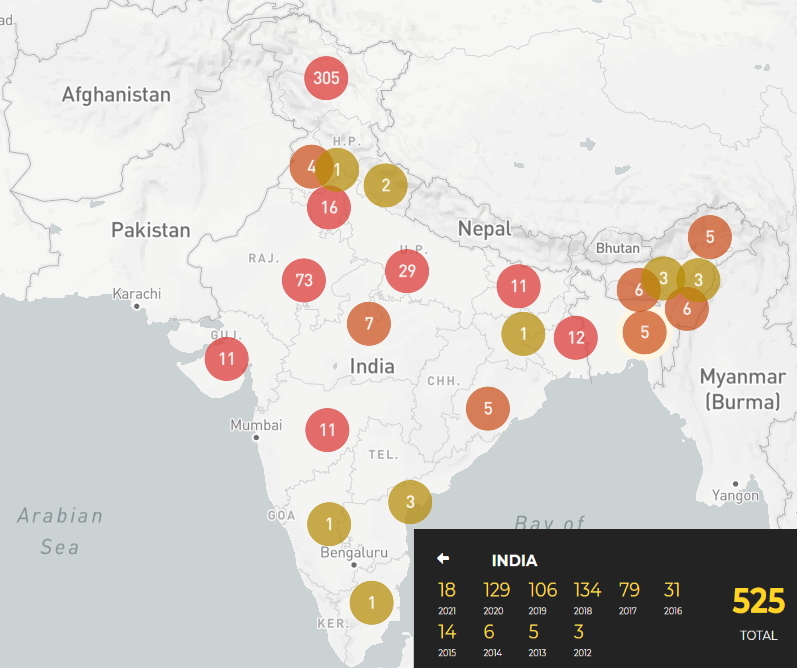
All these details suggest three things: a policy approach that is opposed to the exercise of civil liberties, servility on the part of investigating agencies (and more generally the administration) that is seen in their towing the political line rather than applying the law, and at best the abdication of responsibility by the judiciary and at worst adoption of the executive’s logic. It may perhaps be unnecessary to repeat the manner in which the regime cracked down on student protests in Allahabad (now Prayagraj), or in Delhi’s Jawaharlal Nehru University and Jamia Milia University. Similarly, the slander campaign against the protests over the Citizenship (Amendment) Act and, subsequently, the indiscriminate filing of cases in the Delhi violence of 2020, further indicate the policy of non-tolerance of protests against the government, and a vengeful treatment of all opponents.
[T]here is at least prima facie evidence to argue that (a) individual liberties are being subordinated systematically, (b) institutions are not functioning autonomously…, (c) the regime has little patience with popular protests...
It must be added here that such a summary of events and developments since 2014 does not really do justice to the more generalized and diffuse environment that discourages free political activity. This also does not include the many stories of vigilantism across the country, nor does it chronicle the official majoritarian policies of discrimination against minorities (through laws such as those criminalizing triple talaq, amending the legal idea of citizenship , banning consumption of beef, etc.) and also the policy of discouraging interfaith marriages (by legislating against the so-called ‘Love Jihad’).
In sum, there is at least prima facie evidence to argue that (a) individual liberties are being subordinated systematically, (b) institutions are not functioning autonomously but acting more or less as components of the executive, (c) the regime has little patience with popular protests, (d) Parliament’s function of oversight has been systematically side-lined, (e) the federal structure is routinely undermined in the arenas of governance and competitive politics, and (f) constitutional protections and, more generally, the spirit of the Constitution are easily violated in practice.
This overall sub-democratic (i.e., less than adequately democratic in the operational sense) ambience of the regime can be downplayed or even denied as being non-existent, if one were willing to discard all the above as insignificant and/or as valid possibilities within a democratic framework. This can be done through a combination of two arguments 2 Of course, the more commonly adopted strategy is denial through ‘alternative truths’, but since facts have a bad habit of resurfacing after repression or obfuscation, other strategies become necessary to do away with them. . The first is to argue that democracy is about winning electoral majorities and about election outcomes being broadly acceptable (that is to say, without there being major complaints of ‘rigging’). This argument forgets that the core contention actually lies not so much in the formal outcome in numeric terms, but in the manner in which majorities are achieved by constructing in the first place a community-based majority.
The second and more ingenious argument is to refute the possibility of an epistemological universality of the framework for discussing democracy. In other words, as I have already indicated elsewhere, the worst case scenario is a situation where the regime, its supporters and an increasingly expanding section of pro-regime intellectuals begin to argue that an indigenous definition of democracy must be followed.
2. Long-term context of the slide in India
In addressing this current reality in India, one will surely have to critically analyse the wrong doings of the current regime. But to understand the present reality, we need to situate it in the larger historical processes that may have prepared the ground for the sub-democratic trends we now see in India. Therefore, we need to take a detour into the long-term journey of India’s democracy.
The sharp decline in the authenticity of democracy today has an element of unexpected suddenness to it. But if we want to comprehend the downslide, we need to take into consideration two factors.
One, democracy is a fragile project. It is executed by people and groups who see –most of the time--their interests intertwined with democracy. But when they perceive a clash between the two, they fall back upon their personal/group interest as the initial basis for political action. This complex relationship between democracy and society often witnesses mistakes and subterfuge as well by its practitioners. In this sense, democracy requires continuous ‘protection’ through popular debates and steadfast justifications of democratic principles as the necessary bases for any political action. A society that does not internally generate such protection because of overconfidence is likely to face crises of democracy.
We allowed the Constitution to become folklore rather than the bedrock of democracy.
In India, this need for a continuous reproduction of support for democracy has long been neglected. This is the mistake of taking for granted the success of democracy because we have an excellent design—the Constitution. State institutions, civil society networks and the political actors themselves seem to believe that because of the constitutional framework, we will be firmly protected from the internal challenges to democracy. We allowed the Constitution to become folklore rather than the bedrock of democracy. The educative and political role of the Constitution was mostly ignored 3 That is to say, the Constitution was not used to spread the democratic norms beyond symbolic ideas of ‘people power’ and it was ignored that constitution (its meaning and actual application) constitutes a terrain of contestation, not a given. , although token references to the Constitution kept on increasing in number. The broader lesson that democracy is not secure unless its actual practice is jealously pursued has been ignored. This shortcoming emerged partly from India’s success in conducting elections, in gradually reducing visible electoral malpractices and in building the prestige of the electoral machinery. This made us somewhat blind to the many pitfalls in the practice of democracy.
Secondly, and related to the first, is the fact that the actual practice of democracy over the decades remained dotted with mistakes, excesses and blind spots, constituting departures from and distortions of democratic principles. But we collectively failed to address these departures through institutions, through governance practice or through popular assertions. Often, the societal indulgence of departures put a stamp of acceptability on many distortions and open wrongdoings. Ironically, the success with elections after the Emergency of 1975-77 lulled the people (and also the observers?) into believing that they can tame the rulers when necessary. After all, we forget that democracy was undermined during the Emergency almost democratically—by parliamentary approval and through judicial silence. The Emergency was a shock but the elections that followed benumbed that shock and led us to believe that even if aberrations take place, democracy’s journey could still be put back on the rails. This ensured that Indians would not be impatient with sub-democratic practice.
Let alone the Emergency, many sub-democratic practices have not only been adopted by the political class but are accepted without much public approbation in the course of routine politics. This has led to two starkly different faces of democracy in India. One represented the constitutional foresight, the rhetoric of people’s agency that emphasized the power to vote the rulers out (and the record on this is not at all bad!), and the robust existence of party-based as well as movement-based mobilisation. It is this face of democracy that often emerges through many public opinion studies. The other face of Indian democracy neglected constitutional morality in preference for political expediency, did not mind intrusions into citizens’ rights and represented a willingness to substitute patronage-based relations for transactional citizenship.
Leaving aside the Emergency, many sub-democratic practices have not only been adopted by the political class but are accepted without much public approbation in the course of routine politics.
These two ‘democracies’ often co-exist and actual politics determines which one is more prominent or stronger in its influence on the future course of democracy.
Three normative positions have often helped in justifying the narrow space accorded to political freedoms in this awkward duality. One, that groups are more important (and therefore group rights matter more) than personal freedoms 4 This is a somewhat neglected aspect of the discussion of both group rights and ‘liberal’ (vs. illiberal) credentials of citizens. —the former serves common good, the latter is a foreign (‘liberal’) fancy. Two, the state is wise and caring 5 Ironically, this is the distorted legacy of the so-called Nehruvian regime, further distorted in practice and propaganda by Indira Gandhi, which is now being appropriated by the current regime! and, therefore, a statist approach to governance (intruding into private lives) should be legitimate. And, three, the people as an abstract collective entity are so sacrosanct that power flowing from popular approval is beyond challenge—it is the epitome of democratic authority.
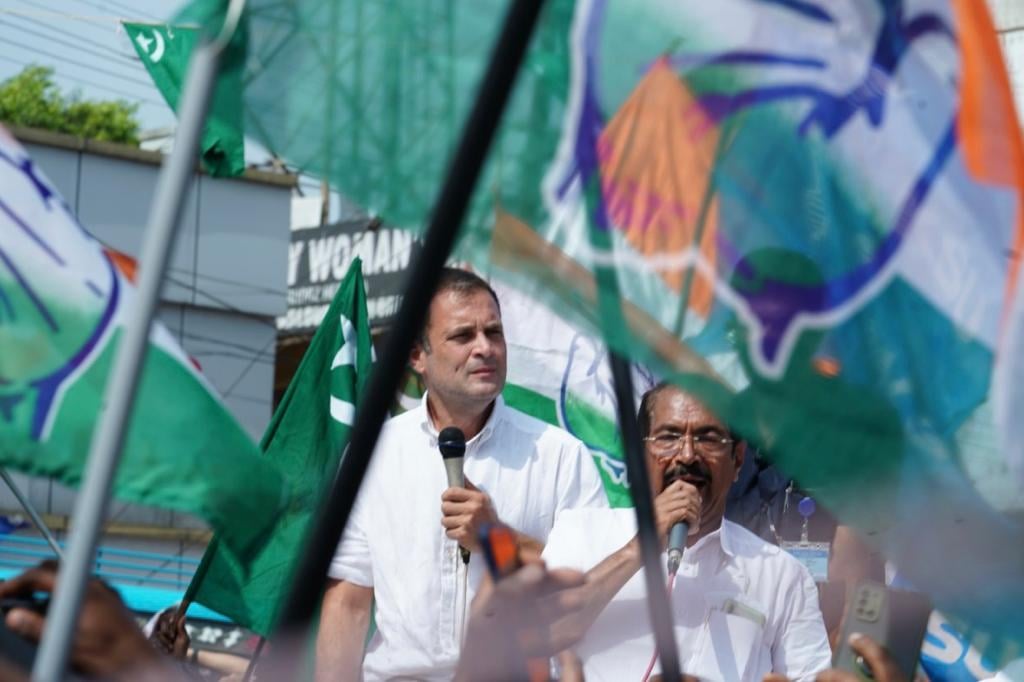
In the arena of competitive politics, there is much ‘whataboutery’ possible on these issues because every party has participated in the dilutions and distortions of principles, in many compromises and in finding excuses for sub-democratic politics. Since society’s immunity from authoritarian practice was weak, when a really determined attack on democracy was mounted by the current regime, it easily unsettled democratic structures. The past sins of other parties cannot become justifications for the present regime’s authoritarianism. Nevertheless, those sins of the past make today’s opposition vulnerable in their fight for democracy unless they genuinely disavow past practice. In other words, they need to become a ‘new opposition’ by reinventing themselves. Moreover, the past practice of sub-democratic politics makes it difficult for citizens to distinguish between a difference in degree (the past) and a difference in kind (the present). The motif of the state confuses the citizens and it becomes difficult for them to differentiate between the small temptations of the power holders to cut corners and a grand design to reshape the polity.
Since society’s immunity from authoritarian practice was weak, when a really determined attack on democracy was mounted by the current regime, it easily unsettled democratic structures.
Overall, how can we sum up the delicate state of our democracy before the current assault? Between alleged risks to the Indian state and apparent limits on political freedoms, we chose to defend the former over the latter. Between reformist legislation in consonance with the Constitution and the vanity of those claiming to represent social groups, we chose to defer to the latter. Between individual rights and agency and group rights, rather than seeking to balance the two, we believed that the latter enriched democracy more. We also never sought to ensure a jurisprudence that would ensure swift punishment. Instead, we kept inventing draconian laws and getting the judiciary to acquiesce with the logic of the executive.
These complex processes and sets of approaches to power, state and citizenship have existed for long. The present regime has not created these processes, but it has systematically appropriated them for its legitimation.
3. Declining investment in India’s democracy
We can now situate the evolving trajectory of India’s democracy and ask the more difficult questions that all supporters of democracy need to ask upfront about the decline in democracy’s attractiveness, the erosion of social stakes in democracy and the possibilities for recovery 6 These questions connect indirectly to the global slide too, and the answers may well have some purchase in theorizing about that more general slide. .
The voter-centric idea of democracy produces democratic language without the grammar of institutional punctuation…
The discussion so far should not be seen as an argument that there is a predetermined linearity to the trajectory of less-than-democratic practice. Both the health and ill-health of democracy are both functions of politics. That is why we discussed the failure of politics in the pre-Modi era as a background to the current shifts and that is also why we need to firmly reject what is going on in the name of the Modi regime.
To recapitulate, democracy in India continues to be a desirable goal but it is not something that citizens think is important to fight for. Democracy remains attractive but only in its minimalist avatar of the vote and electoral participation. This allows the voters to draw satisfaction about their prowess and simultaneously allows the rulers to invoke the idea of ‘people’ without investing in them active powers of supervision and control. The voter-centric idea of democracy (a precursor to the complex web of populist politics) produces democratic language without the grammar of institutional punctuation; it allows the celebration of the people without upholding the value of the individual. Above all, the practice of such electoral and ‘people’-centric democracy can easily slip into various distortions and the broader erosion of democratic norms. Though the political class as such benefits from this version of democracy, the core question would still remain—why is it that citizens do not demand a substantive and expanded democracy?
[D]emocracy in India continues to be a desirable goal but it is not something that citizens think is important to fight for.
Historically, democracy has been upheld by one or the other section for its perceived advantage over the older orders. The bourgeoisie once upheld it to counter feudalism, the proletariat was exhorted to fight the capitalists to establish ‘true’ democracy, the colonial populations saw in democracy a forceful weapon against the colonisers and for their own internal unification. The poor, mainly in the First Worlds, saw democracy as a form of politics to push through welfare and universal well-being as goals of their societies. People of colour in the US, those facing racial discrimination elsewhere, women the world over, and subsequently the minorities in many societies appropriated democracy for their respective struggles. In other words, in every epoch, democracy received support from some social section hoping it to be a weapon in their political struggles. In the process, democracy became a popular force across the globe and across social sections.
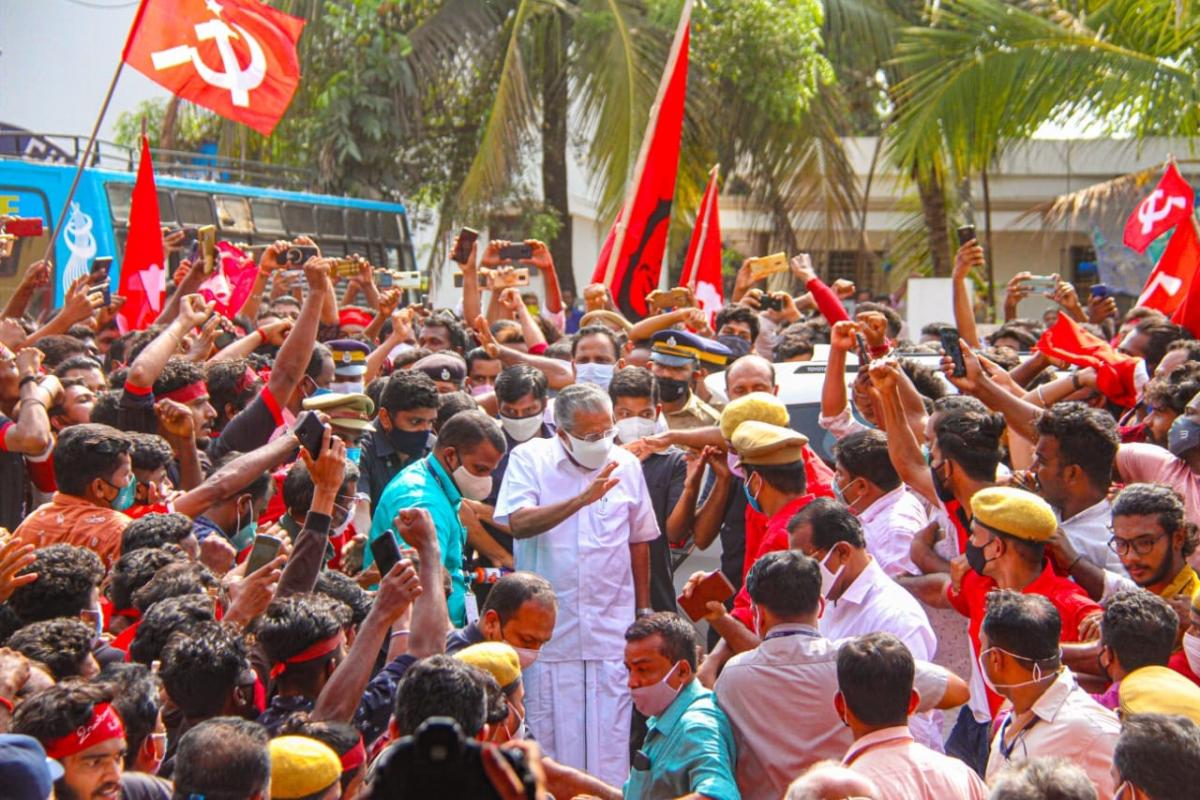
This popularity expressed as an active investment by social sections in democracy was the backbone of democracy’s success in the 20th century. The ideological romance with democracy had this very concrete political possibility of the ascendance of some marginal section in the realm of power and/or living conditions. It is therefore necessary to comprehend the current moment of democratic recession in this larger context. Behind the ideological and normative support that democracy enjoys, there is often the expectation that democracy would enhance the political (and in many cases social and economic) location of some class of people. Normative, academic and polemical iterations of the virtue of democracy notwithstanding, is it that democracy is losing its ability to attract the social forces it needs to sustain itself?
[I]s it that democracy is losing its ability to attract the social forces it needs to sustain itself?
Let us look at the evolution of the support for democracy in India from this perspective. Very early in the colonial period, the foresight of Jotirao Phule put democracy to the task of contesting caste-based monopolies of power, prestige and resources. More generally, too, the anti-caste struggles got the so-called lower castes interested in democracy as a weapon they could use. The anti-colonial movement brought together a fairly broad coalition in terms of caste, class and regions to uphold democracy as a weapon against the colonisers and as a corollary of nationalism 7 Incidentally, this is the reason why in the Indian context positing nationalism as a higher goal above democracy is intellectually fraudulent and politically foolish. The democrats will do well to remember this—that democracy was the arsenal of nationalism just as much as it was an arsenal of social justice. And only democracy ensured the unity needed for our national existence. .
(Incidentally, this is the reason why in the Indian context, positing nationalism as a higher goal above democracy is intellectually fraudulent and politically foolish. The democrats will do well to remember this—that democracy was the arsenal of nationalism just as much as it was an arsenal of social justice. And only democracy ensured the unity needed for our national existence.)
It was probably in the 1970s that the post-independence euphoria about the Indian state being the balancer began to evaporate.
The Constitution ensured that most social sections would rally behind democracy because both, the Constitution and democracy as imagined by it, would not be instruments of any one class or section but instead strive to consolidate the idea of well-being of all. This also opened up possibilities of contestations over what the state does and does not do. Bypassing the issue of whether the state was an instrument of this or that class, the Constitution ensured that state would be the arena of contestations among different sections. Therefore, an open and democratic relationship would mark intergroup relations as also the relations between state and social groups. In spite of the emphasis on planning, redistribution and welfare, the post-Independence polity avoided hurting the interests of the elite and the middle classes. This meant that in the immediate post-Independence period, democratic politics did not alienate these influential classes while assuring ‘power’ to sections of the less privileged.
Since the Mandal agitation, the only large-scale popular agitations have been the communal and divisive mobilization.
It was probably in the 1970s that the post-independence euphoria about the Indian state being the balancer began to evaporate. Around the same time, the middle class gained, if not as yet so much in numeric strength, it did at least in terms of its cultural-ideological ascendance. It hence did not any more require the state to protect its interests. This distancing of the middle class from democratic politics became even more acute in the late 1980s . But precisely at that moment, the poor, rural and marginal groups in society began to invest more in the democratic project (famously described as a “democratic upsurge”). However, just as the Indian state was consolidating its resource capacities, it was losing its political capacity to either work for the poor or to minimally balance the contrasting interests of lower half of the population and the thin upper layers. Within a decade or so, thus, the poor and marginal sections that had been more attracted to democracy must have begun to realize that the democratic claims of the state were mainly rhetorical. Did that realization perhaps cause them to lose interest in democracy, except to occasionally support some local protests ? Large scale popular mobilizations too quickly receded in the post-1990s phase. Since the Mandal agitation, the only large-scale popular agitations have been the communal and divisive mobilization.
Thus, just as a regime determined to distort democracy and misuse state power became ensconced in Delhi, popular support for democracy was turning into a formal approval expressed only through the ballot, rather than making a substantive and continuous investment in the quality of democracy.
4. In lieu of a conclusion
This complex story obviously cannot have an easy or quick ‘conclusion’. But any mid-term to long-term analysis of India’s democracy needs to keep elaborating on the two propositions proffered here and at the same assert that the present regime is the vehicle of sub-democratic politics at the current moment.
The two propositions may be restated. One, the contemporary downslide emerges from a long-term neglect of the task of democratic consolidation coupled with a tendency to overemphasize the role of the state. Two, the popular investment in democracy has become increasingly nominal and weak, concomitantly there is no social force actively demanding and defending democracy.
These two processes have weakened democracy in India, but it could still trudge along. Something else additionally has weakened democracy. That is why a scrutiny of the current moment must be the starting point of analysis. The current surge of sub-democratic practice and rhetoric rides on the back of a normative universe of majoritarianism. Thus, two processes combine to denude our politics of democratic possibilities. On the one hand, there is a century-old project of Hindutva that has gained political traction in the name of nationalism and the principle of majority. On the other hand, the same moment also holds the most determined attack on democracy through its authoritarian management of the polity (what many observers have described as a ‘populist’ strategy of politics and governance). The two though conceptually distinct are inter-related in actual politics, calling upon us to handle both an intellectual and a political challenge. And these are not exactly separate from each other.
The intellectual challenge is to locate the intersections of majoritarian and populist politics (i.e., to see how they currently feed on each other), even while identifying their separate challenges. Finding apologies for the regime by citing past aberrations or extending hopes of a quantum jump of the economy or creating the lure of a nationalist rejuvenation will simply be democratic treason.
The political challenge is to avoid the temptations of both these political routes that may hold out the possibility of quick political dividends. Lazy politics that hides behind popular sentiment instead of shaping popular sentiment will ensure that the democratic slide will be normalized and theorized as a new version of democracy. The decade ahead can either be a bitter summer of struggles that would call on citizens and social groups to re-invest in democracy or an opaque but sure advance toward ‘disinvestment’ in what not so long ago India’s democracy stood for.

